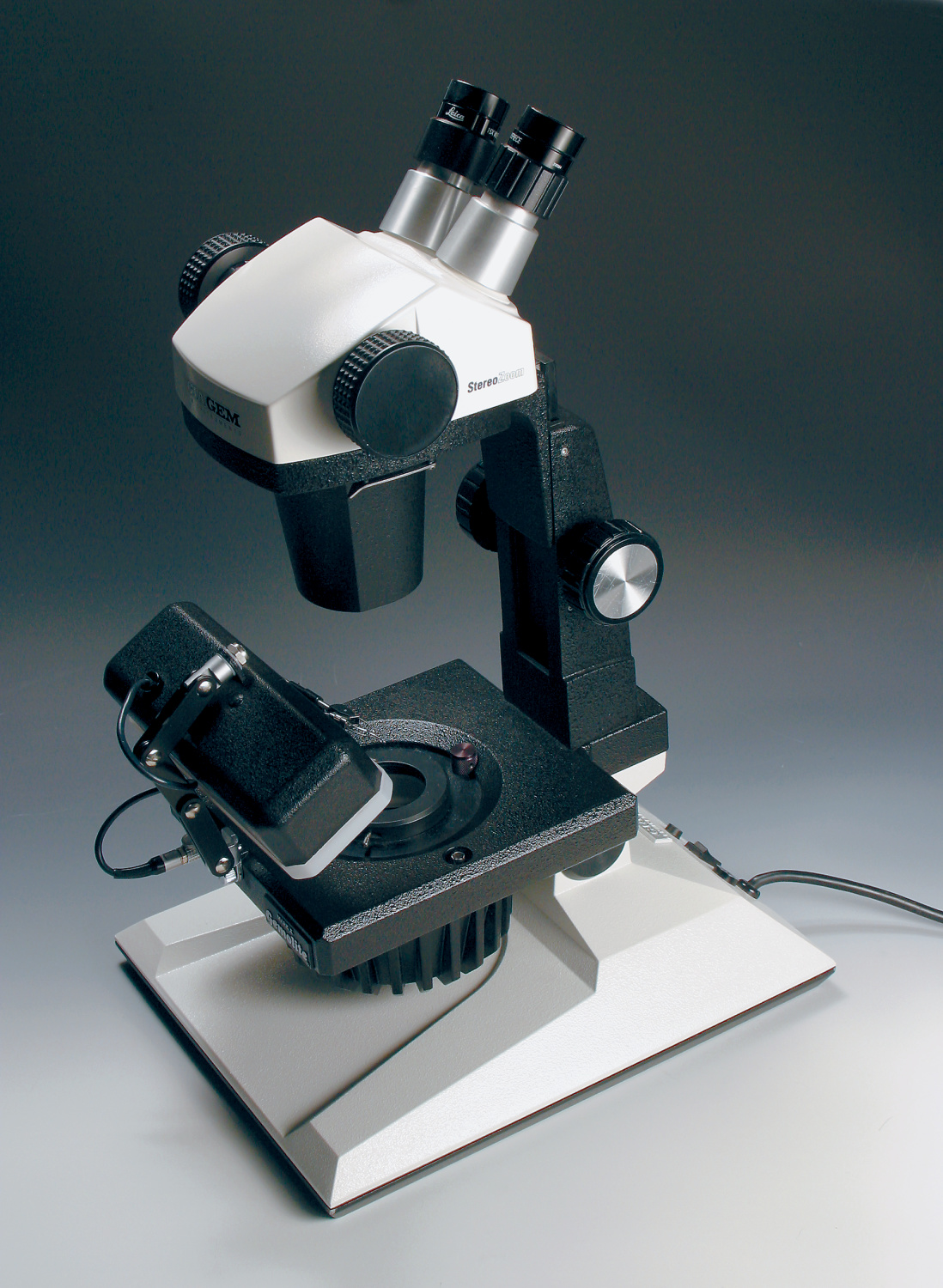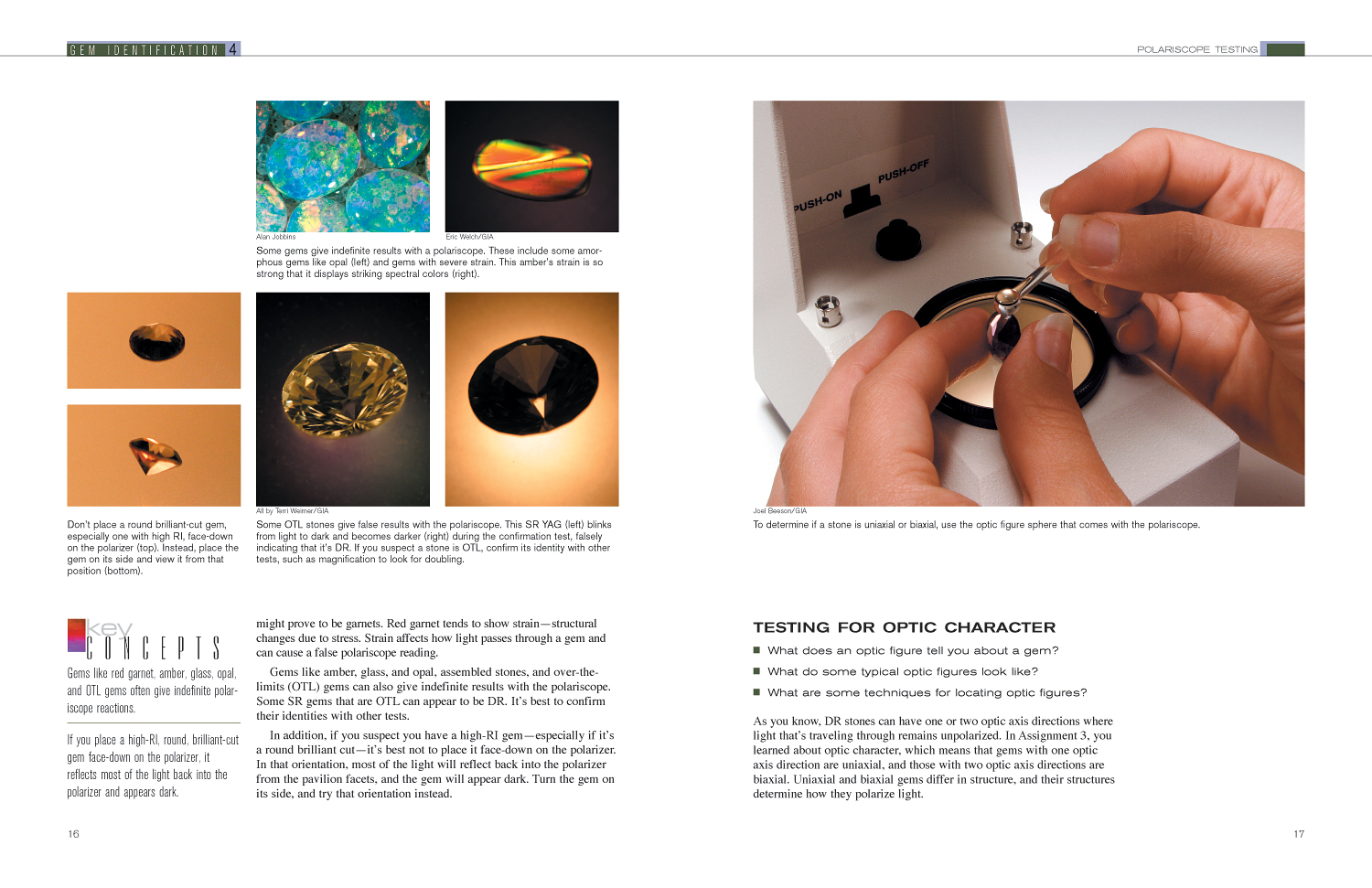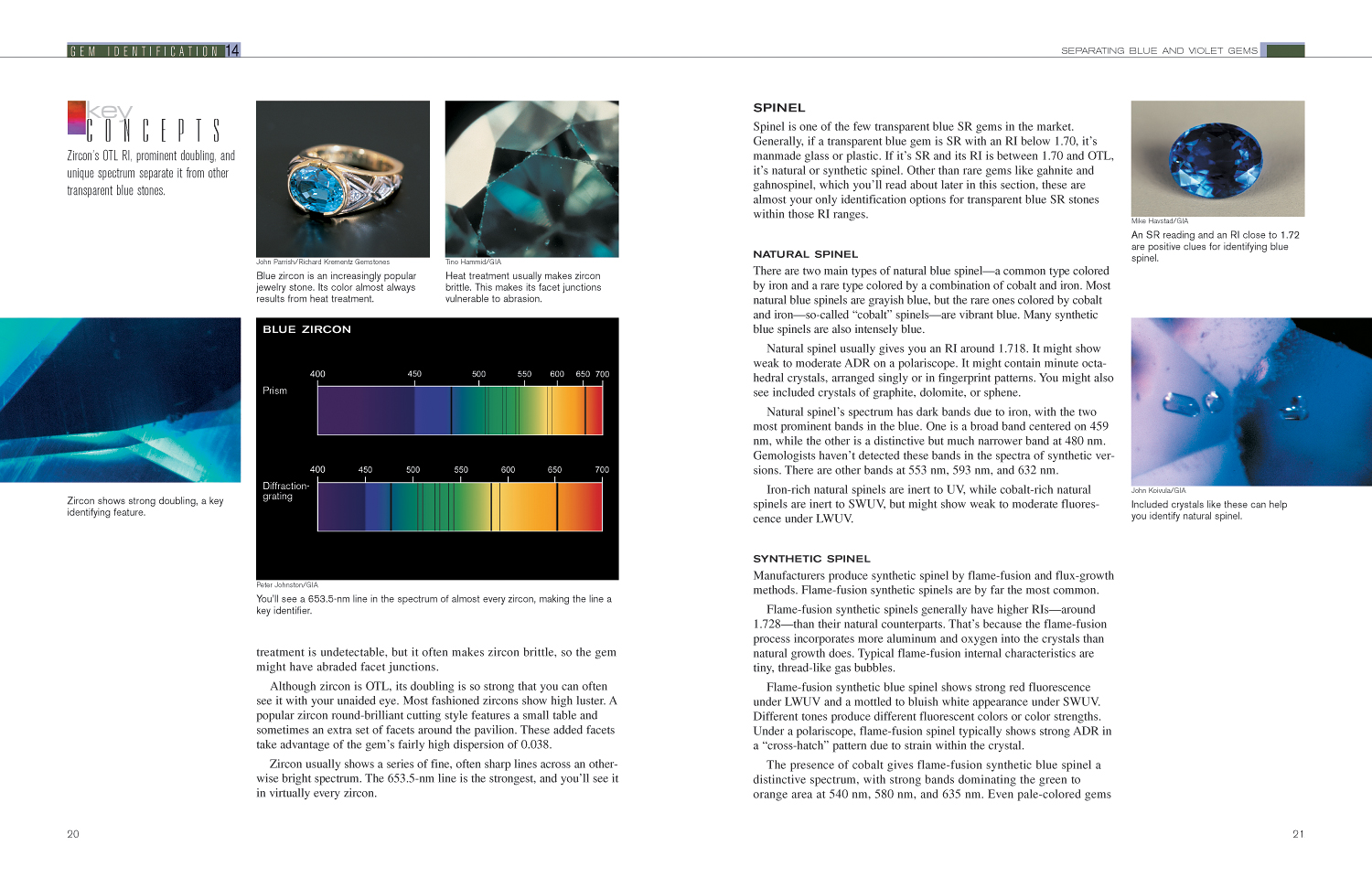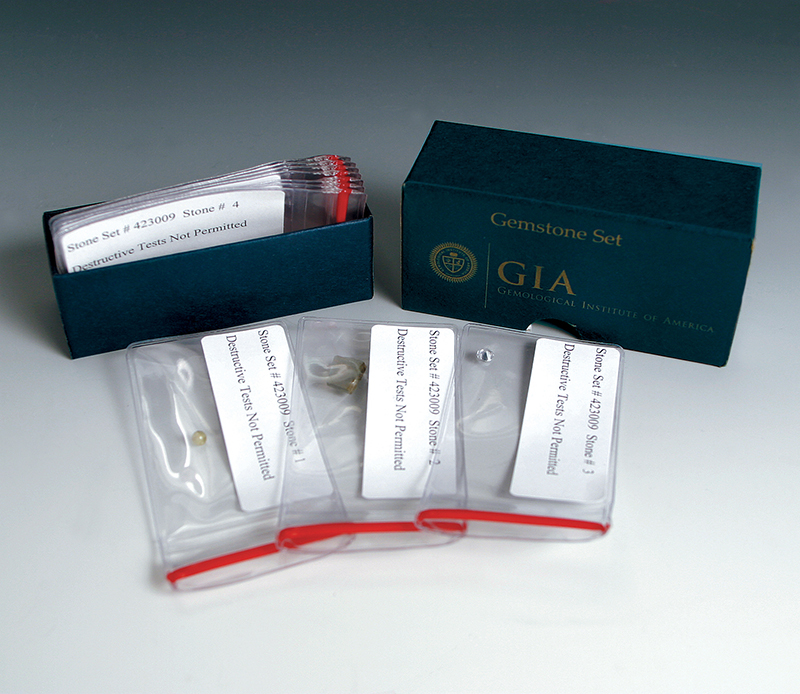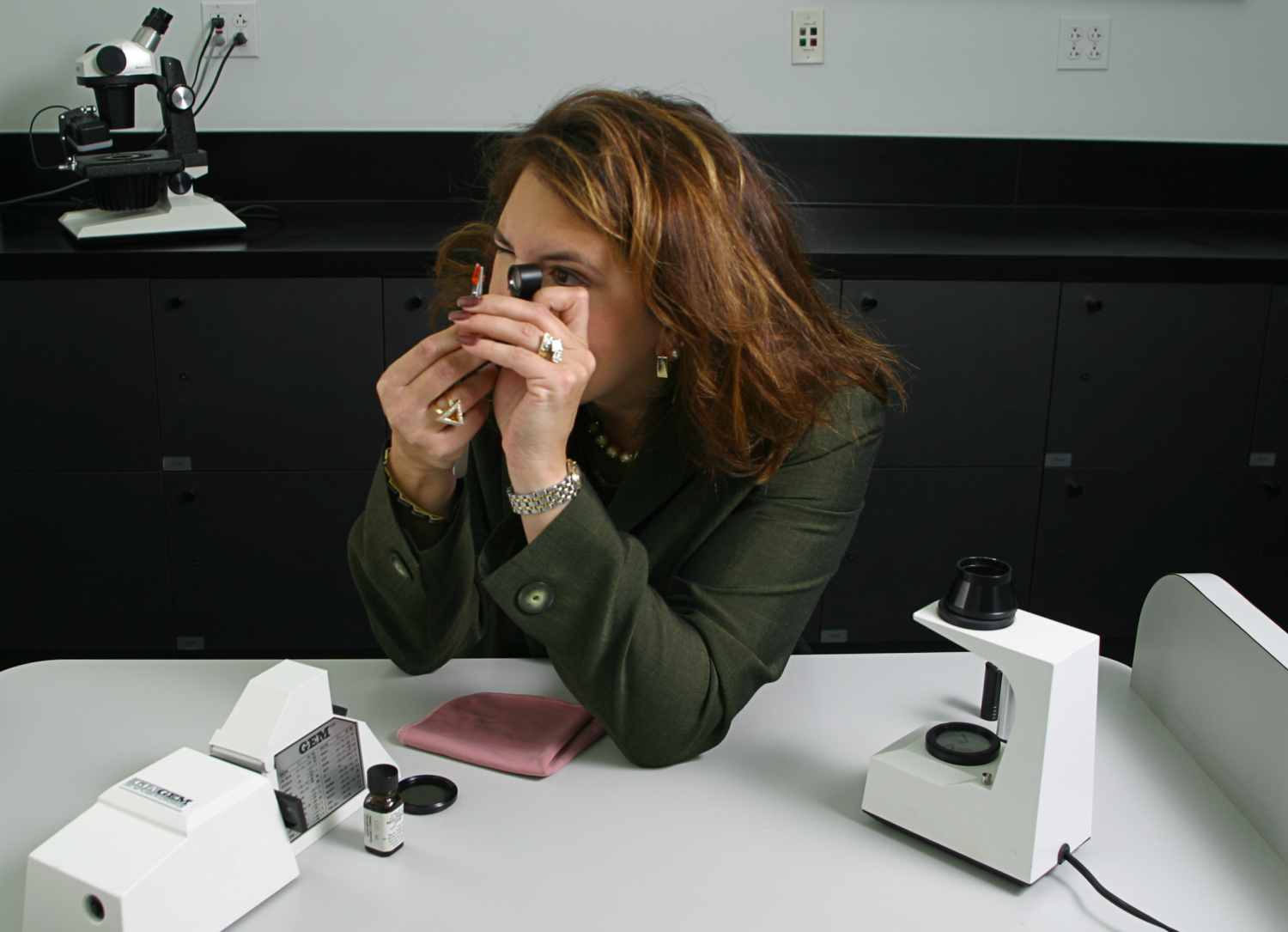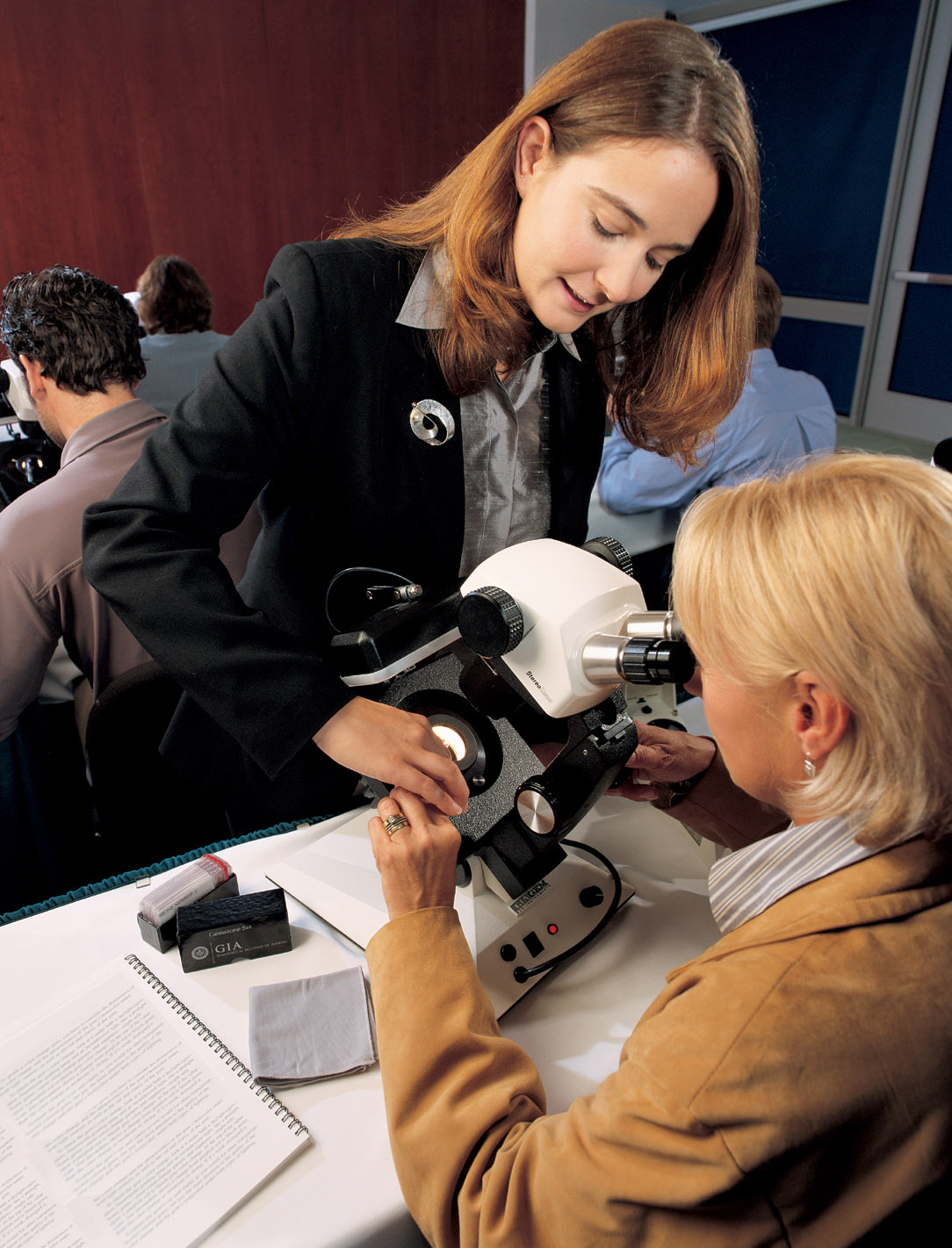The main objective of the Gem Identification course is to give you the practical skills you need to use standard gem-testing equipment and identify almost all the gems in today’s marketplace. You’ll learn a reliable, progressive testing method that steadily eliminates the possible alternatives until you arrive at the correct identification.
This course consists of three main sections. Assignments 2 through 10 provide structured procedures for using the standard gem-testing instruments—refractometer, polariscope, dichroscope, loupe, microscope, spectroscope, and ultraviolet lamp. Assignment 10 shows you how to use the instruments together in a logical, progressive gem identification process.
The second section—Assignments 11 through 19—provides the information and techniques you need to separate and identify the vast majority of gems in the market today. Assignment 11 covers the separation of natural gems from synthetics and imitations. Assignment 12 teaches you to identify gem treatments. Assignments 13 through 17 separate gems by color and transparency. Assignment 18 deals with rough gems and parcels. Assignment 19 introduces the advanced testing techniques that laboratory gemologists use when conventional gem-testing methods fail.
As you work through the assignments, you refine your identification skills on stone sets loaned to you by GIA. Unless you told your instructor not to send them, you received the first set of stones—which you’ll use with Assignments 2 through 10—with your course materials. You must return this set before you can get the sets for Assignments 11 through 19. Assignments 1 through 19 also have questionnaires to help you check your progress.
Assignments 20 through 36 form the third major part of Gem Identification. These assignments have no written questionnaires, but each assignment has its own corresponding stone set. The stone sets were selected to represent certain characteristics and properties that you must be familiar with to become skilled at gem identification.
As you work through these assignments, you use the techniques you learned in the earlier assignments. You fill out a worksheet for each assignment and submit it to your instructor for grading. For this purpose, your course materials include a quantity of Gem Identification Worksheets. You can familiarize yourself with the worksheet by looking at the sample in Assignment 2.
The Gem Identification Lab Manual, which you ordered with your course enrollment, lists the gem materials you’re likely to encounter by color, transparency, and refractive index. It contains key separations for important gems and the information you need to confidently identify the stones in the sets.
The electronic media in the online assignments are another learning aid. In them, you’ll find demonstrations of the gemological instruments and techniques described in the assignments. The live-action videos and detailed animations will enhance your learning experience as you make your way through the course.
You must identify hundreds of stones to meet the practical requirements of this course. If you work steadily, this task isn’t as over-whelming as it sounds. You can set your own pace by choosing how often you receive the stone sets. This lets you balance your course-work with other commitments. You can receive practice sets at home or in your place of business at the rate of one per week, or one every two, three, or four weeks. You can have a maximum of four sets at any one time. Your instructor can give you more information on the timing of your practice sets.
To complete your gem identification education, you have to attend the Gem Identification Lab class. In class, you use the full range of standard gem-testing instruments and techniques to identify natural gemstones, synthetics, and imitations. In demonstrations and hands-on practice, you see and test many gem materials. Your instructors carefully explain key tests and teach you quick, effective testing procedures.
Many students find the class an excellent preparation for the 20-stone test. GIA offers Lab classes several times a year in locations throughout North America and around the world. Your instructor can give you more information about class schedules and locations.
